Sealife guideThe red sea-squirtHalocynthia papillosa
Last updated on 09/04/2024 at 10:10 PM
Taxonomy
- Common name: Red sea-squirt, sea peach
- French name: Ascidie rouge, « outre de mer », « vioulet (ou vioulé) rouge »
- Scientific name: Halocynthia papillosa (Linnaeus, 1767)
- Family name: Pyuridae
- Order name: Stolidobranchia
- Class name: The sea squirts [Ascidiacea]
Description
The red sea squirt lives solitarily and measures around 4 inches in length but can reach a maximum size of 8 inches.
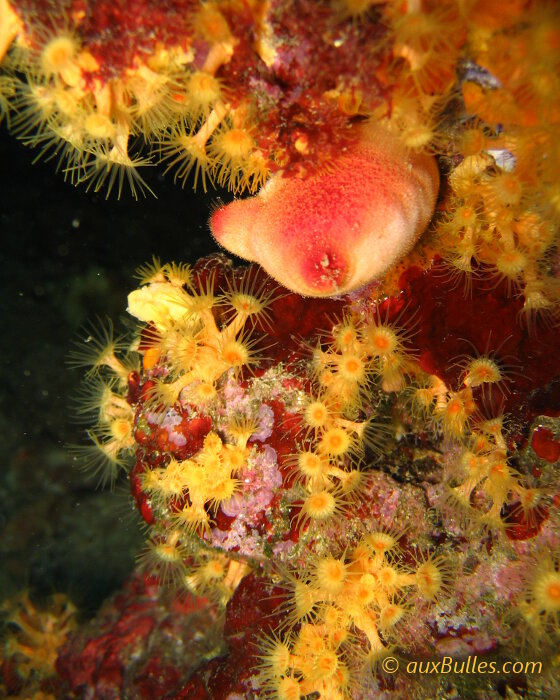
The red sea squirt lives solitary and measures around 4 inches in length
The sea squirt’s body, swollen like a bladder, earns it the nickname « sea bladder » in french. It stands upright in its bright red to orange-red tunic, with a lighter hue on the less exposed side.
The red sea squirt’s covering, called the tunic, is granular and features two cylindrical tubes known as « siphons »: one vertical, standing upright like a chimney at the top, and the other horizontal near the upper third.
Sea water enters through the upper siphon, called the oral siphon, where it is drawn in and then expelled through the lateral siphon, called the cloacal siphon, after passing through a filtration system designed to capture microorganisms, both plant and animal, as well as the oxygen needed for respiration.
Each siphon is equipped with fine, silky cilia at its opening to detect and prevent the intrusion of particles that are too large.
Geographic range
The red sea squirt can be found from the surface down to depths of 328 feet.
It is found in the Mediterranean sea, where it is very common and also in the part of the Atlantic ocean close to the Mediterranean extending up to Portugal.
Habitat
The red sea squirt lives on rocky substrates or in seagrass beds, particularly around the rhizomes, but always in sheltered, low-light conditions.
It is commonly seen on the walls of dimly lit drop-offs, at the entrance or on overhangs of rocky crevices.
Diet
The red sea squirt feeds on microorganisms it traps through active filtration of seawater.

The red sea squirt's body, swollen like a bladder, earns it the nickname 'sea bladder' in french
Reproduction
It reproduces sexually. Eggs are fertilized by sperm to produce larvae, which then settle on a substrate and develop into new sea squirts.
Did you know ?
The opening of the upper siphon can appear as a cross when it is closed.
The red sea squirt can retract its body by expelling all the water it contains.
It is one of the most widespread sea squirt species in the Mediterranean.
Tips for observing
Observe the siphons, which are very clearly visible. They react to even slight changes in the surrounding water pressure.
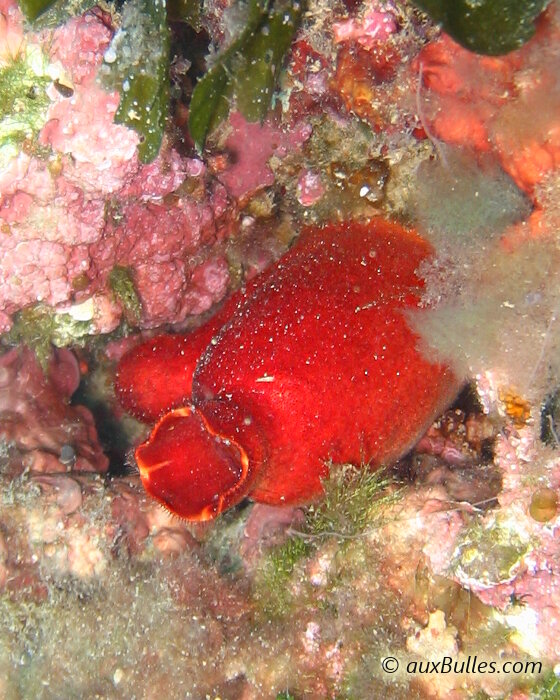
The red sea squirt's covering features two cylindrical tubes called siphons: one vertical, standing upright like a chimney at the top and the other horizontal at the upper third
Examine the tips of the siphons to determine whether they are open or closed.
Discover also
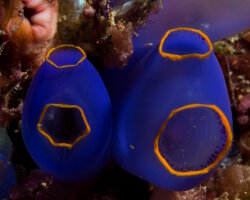
Blue tunicate
(Rhopalaea fusca)
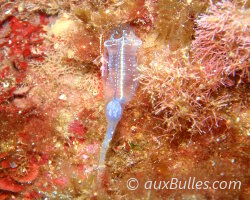
Bluestriped light bulb tunicate
(Clavelina dellavallei)
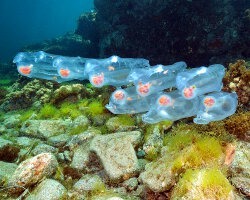
Giant salp
(Salpa maxima)
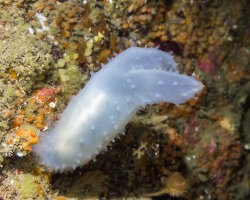
Glassy tunicate
(Ascidia paratropa)
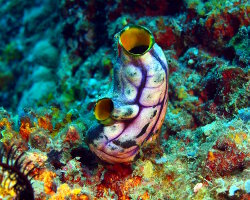
Ink spot sea squirt
(Polycarpa aurata)
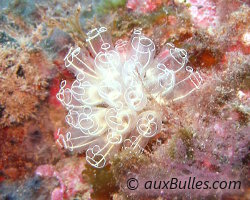
Light bulb sea squirt
(Clavelina lepadiformis)
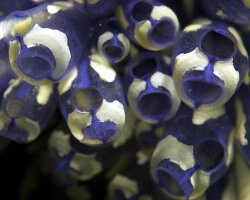
Painted tunicate
(Clavelina picta)
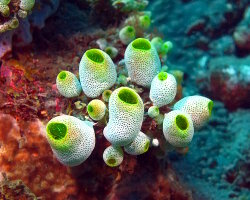
Tall urn ascidian
(Didemnum molle)
The marine species from Mediterranean sea
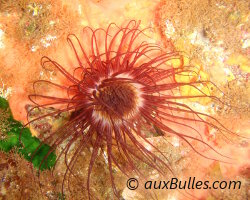
Cylinder anemone
(Cerianthus membranaceus)

European conger eel
(Conger conger)
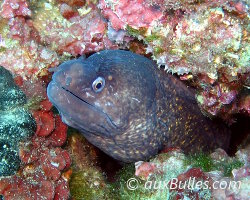
Mediterranean moray eel
(Muraena helena)
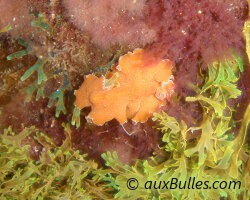
Orange flatworm
(Yungia aurantiaca)

Purse codium
(Codium bursa)
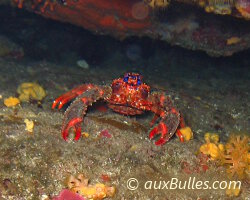
Spinous squat lobster
(Galathea strigosa)
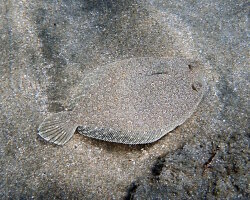
Wide-eyed flounder
(Bothus podas)

Yellow encrusting sea anemone
(Parazoanthus axinellae)























